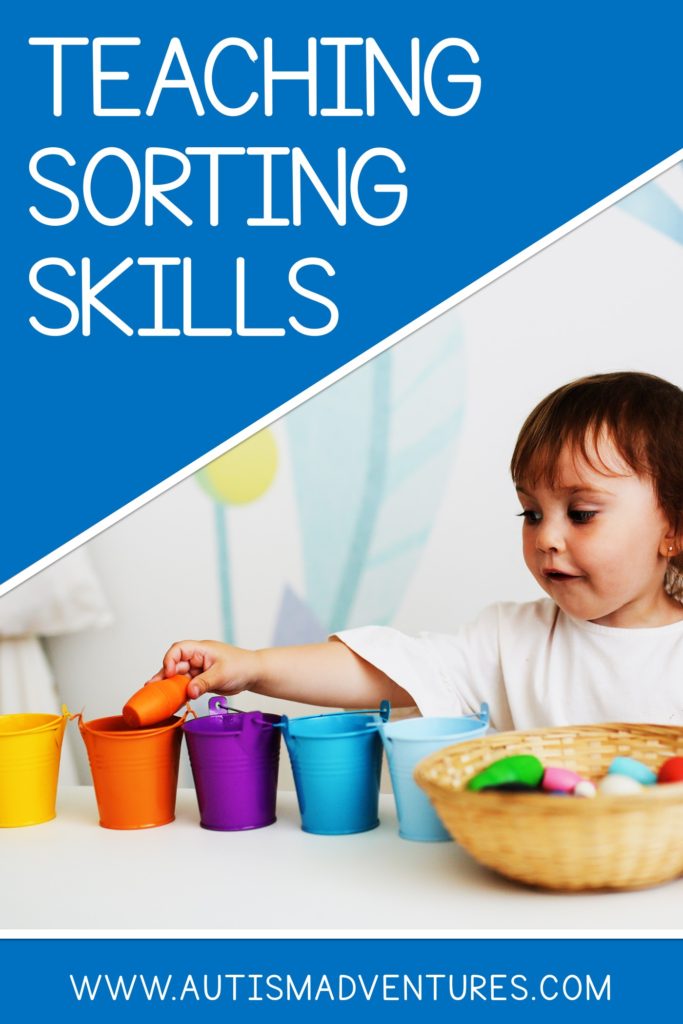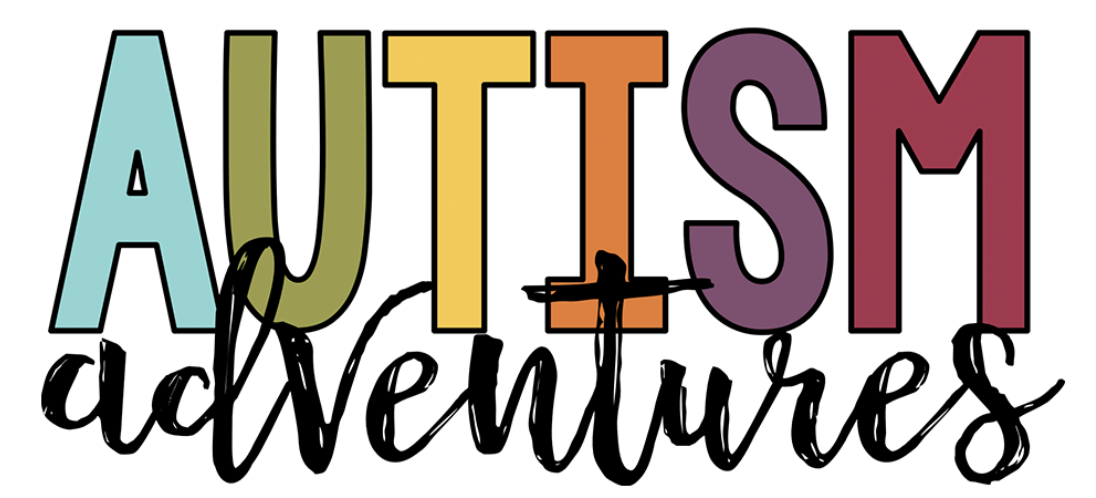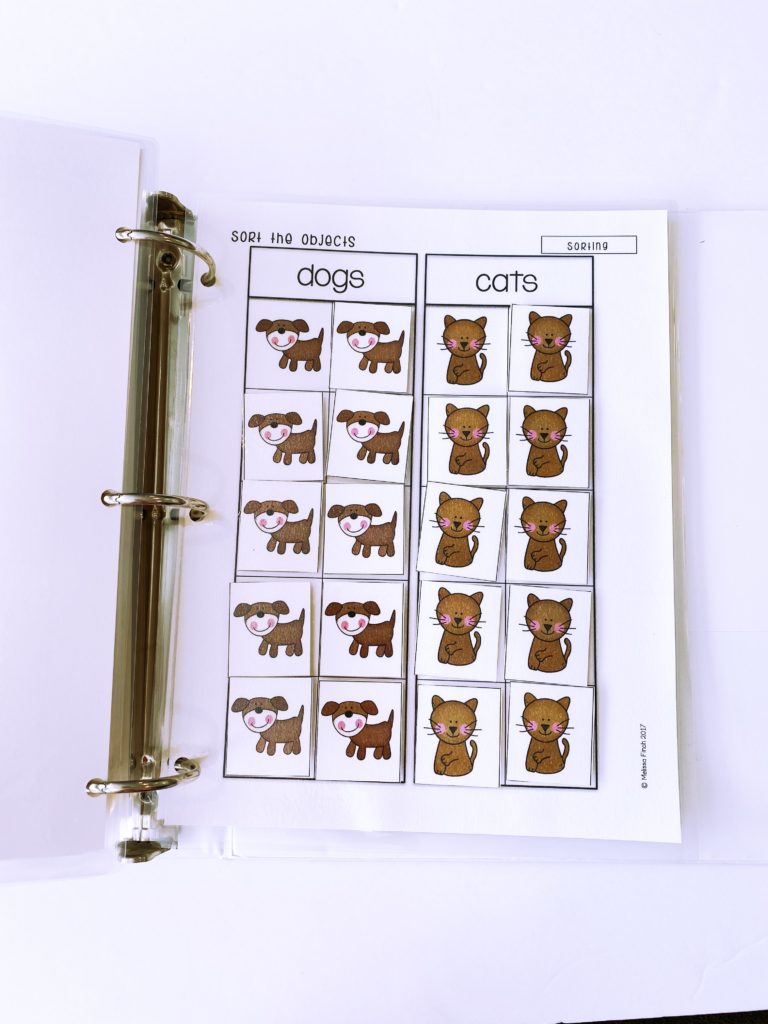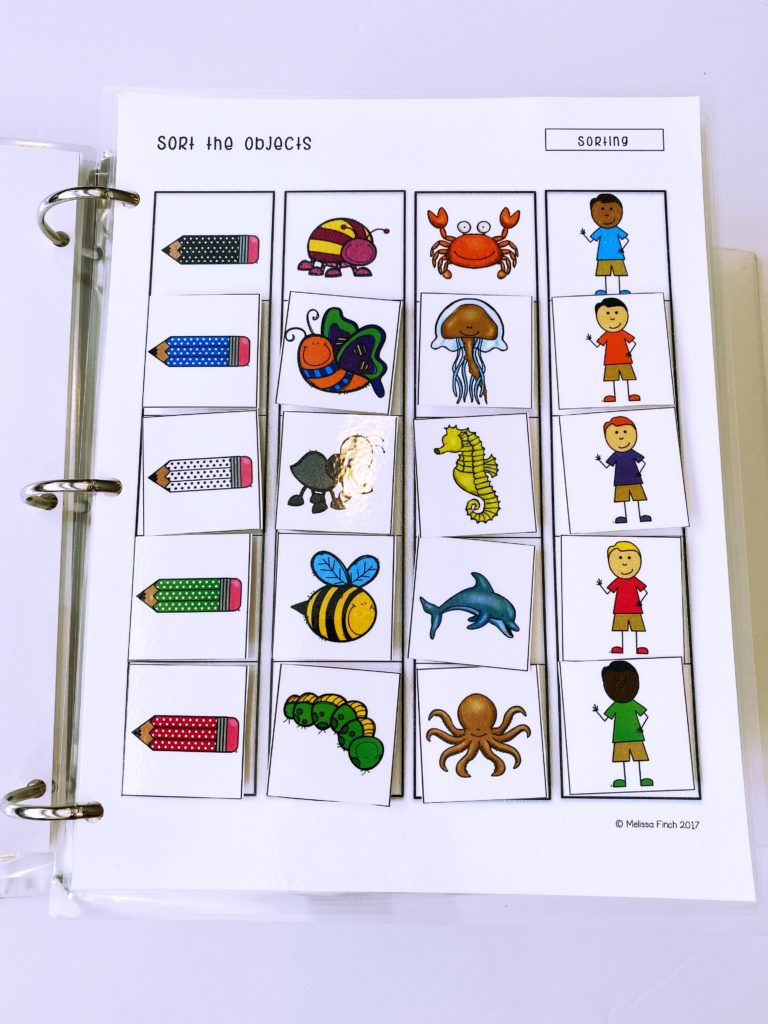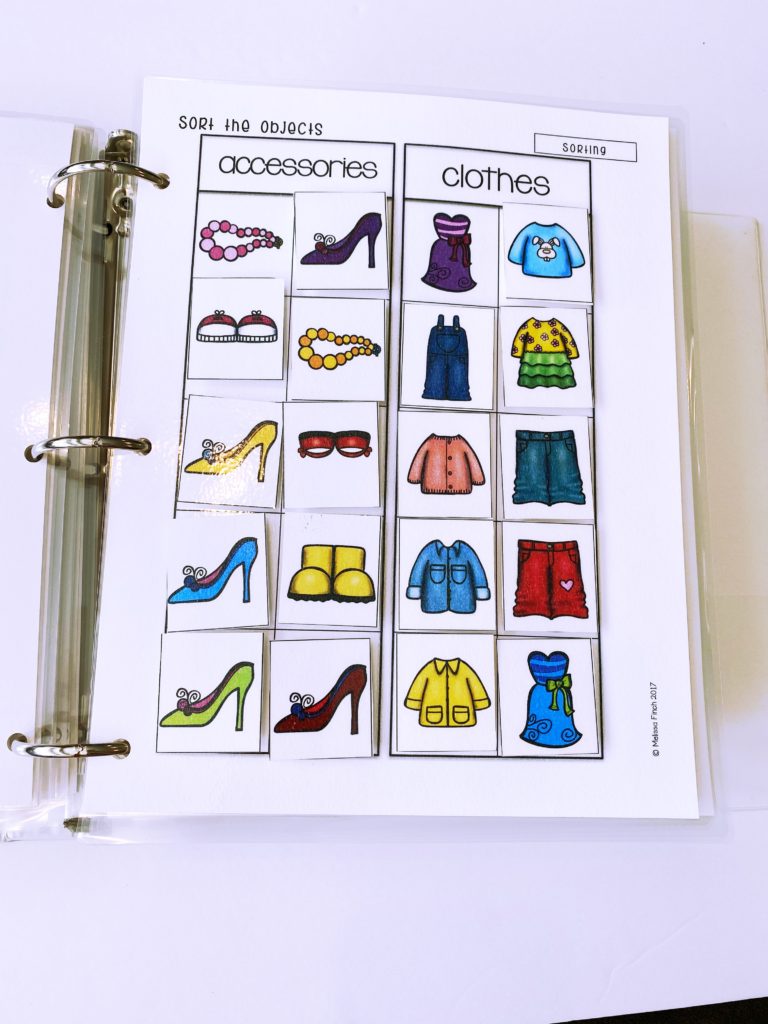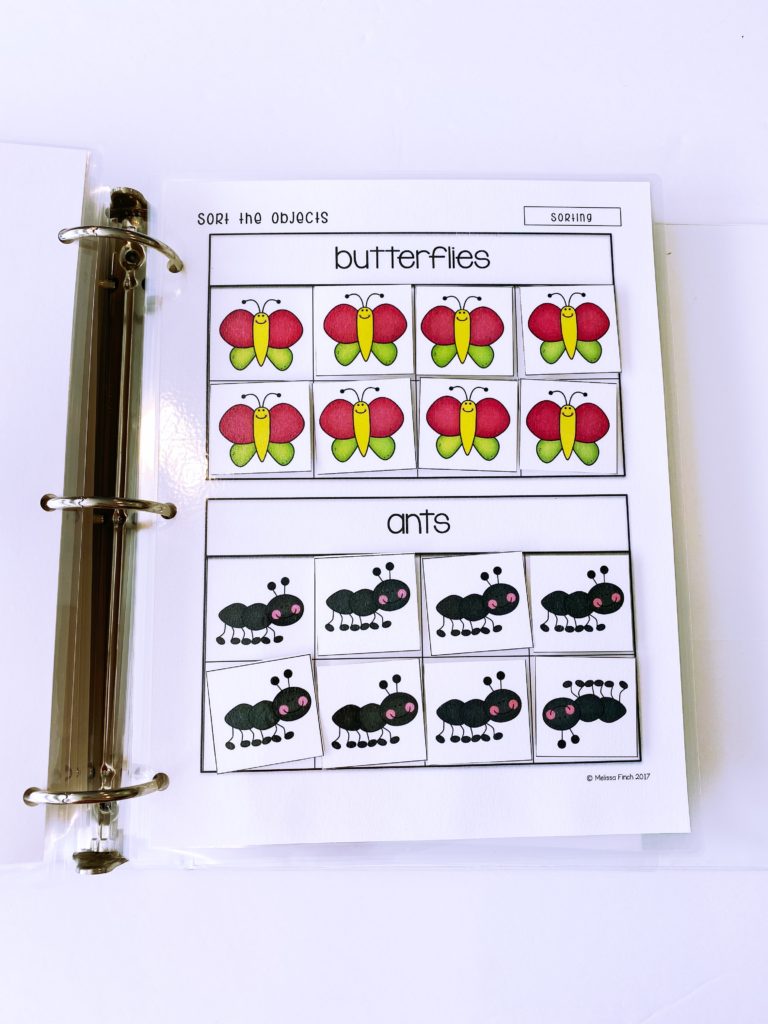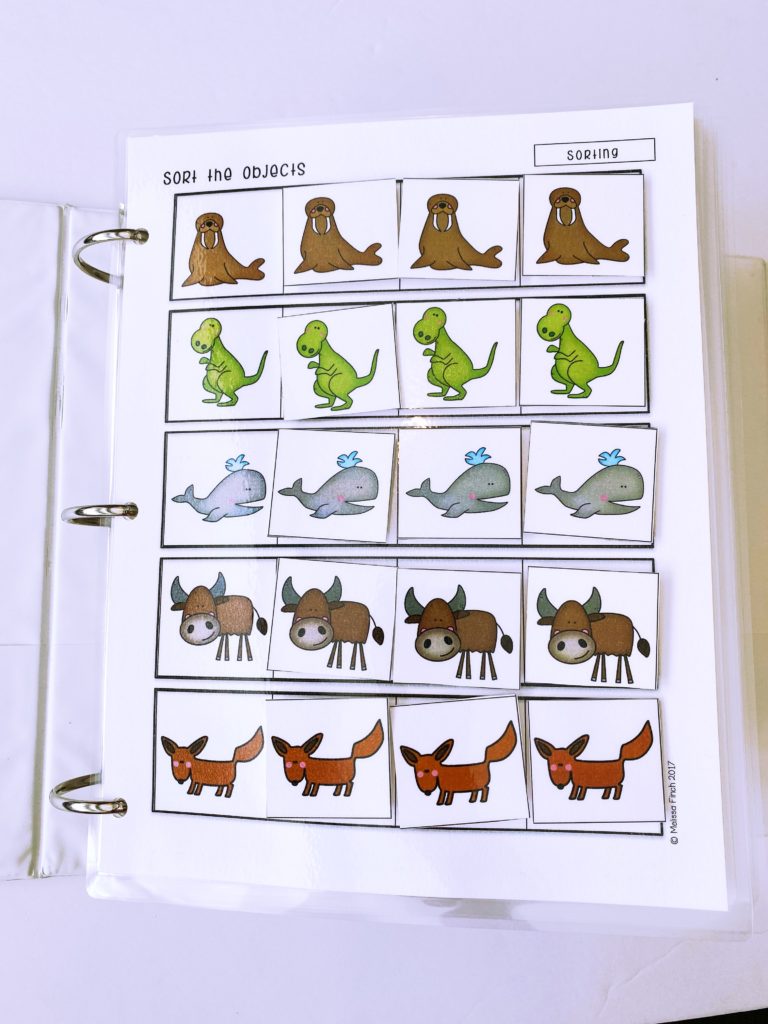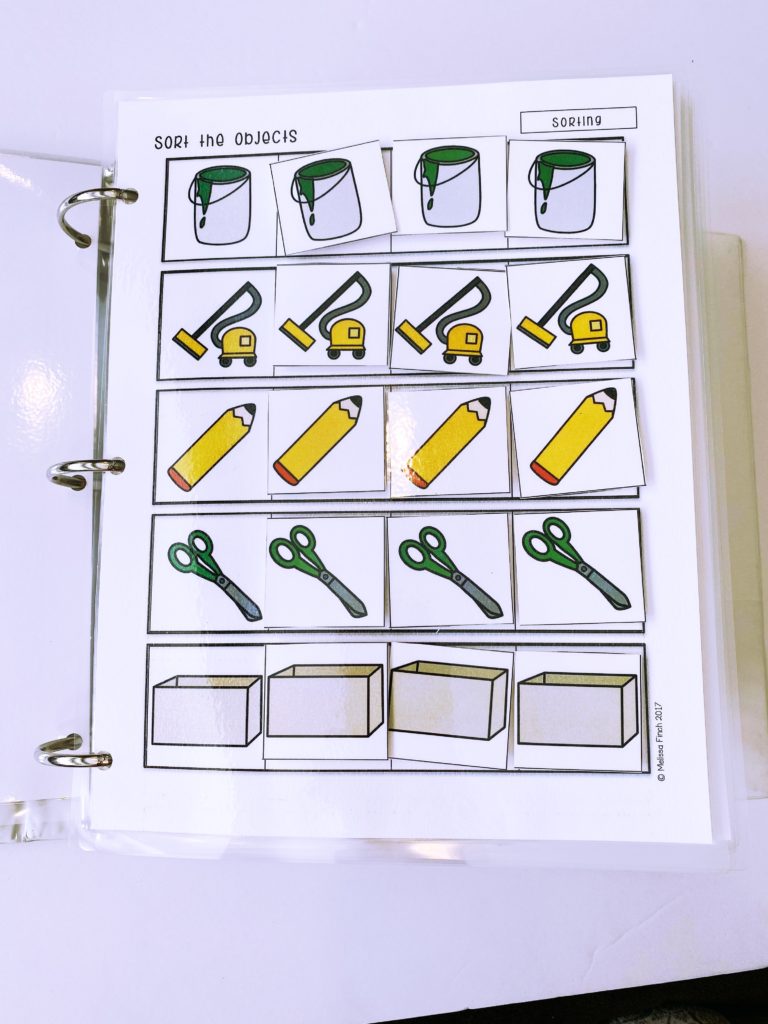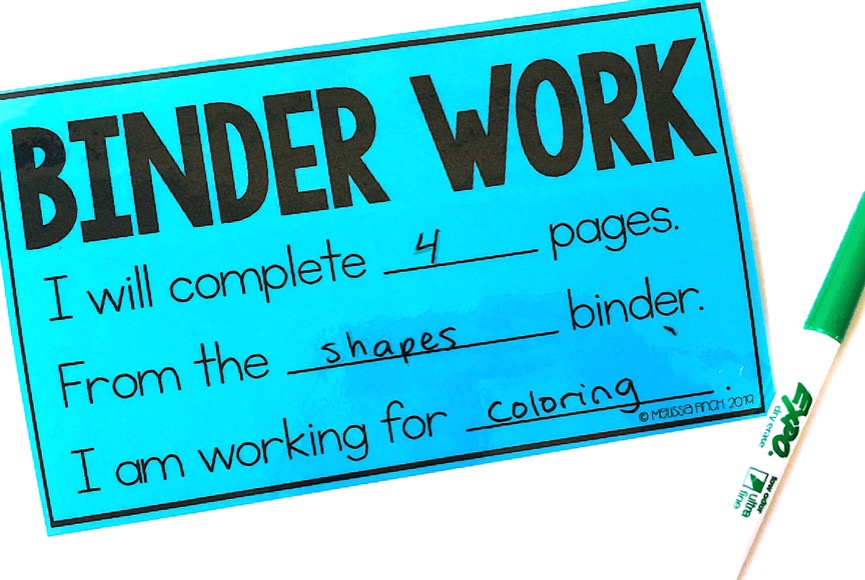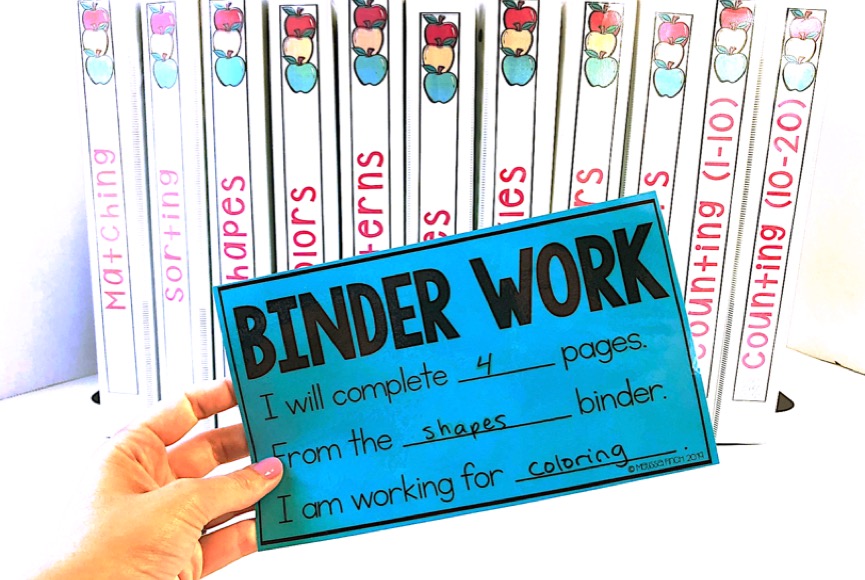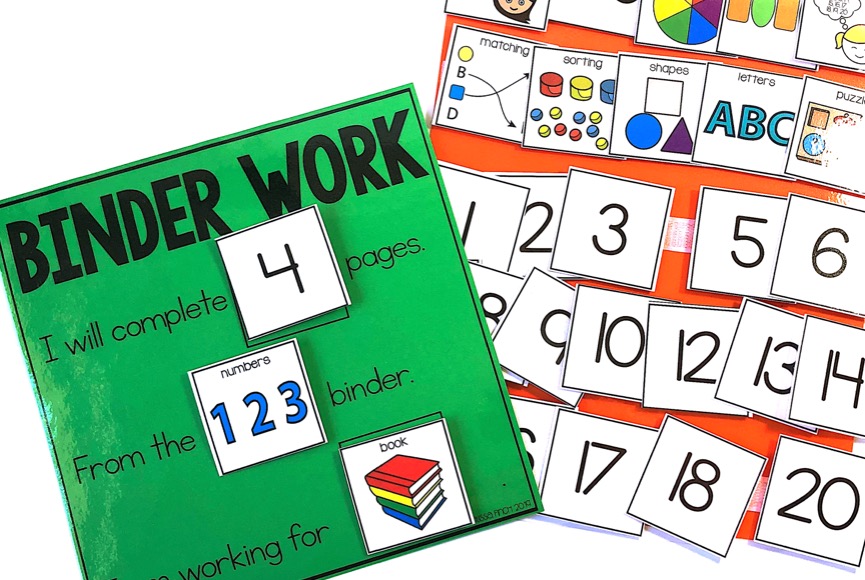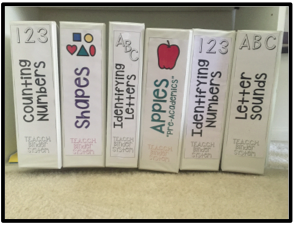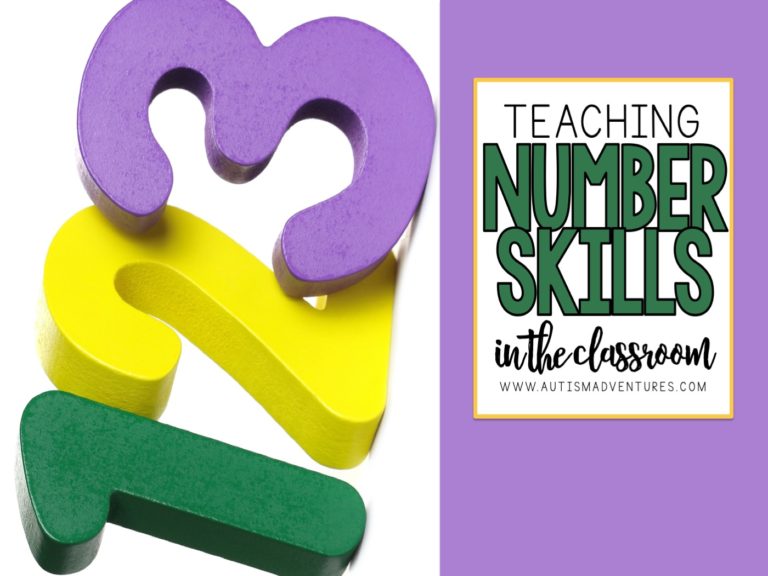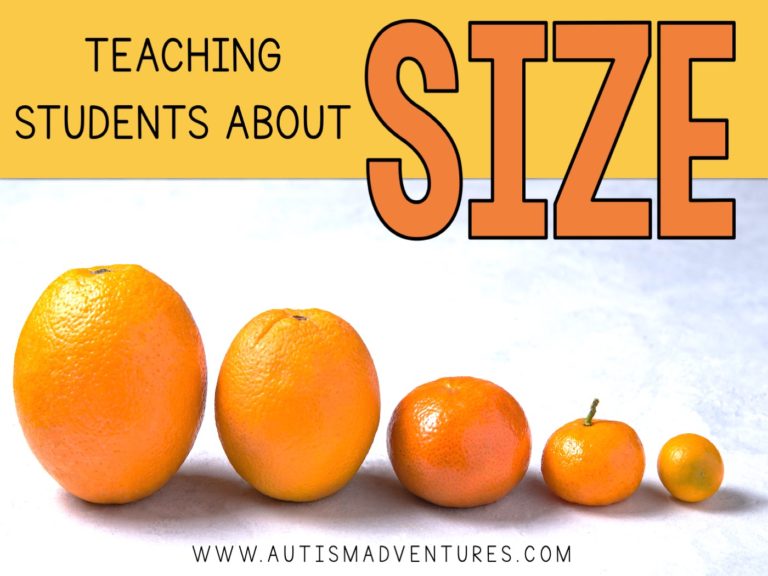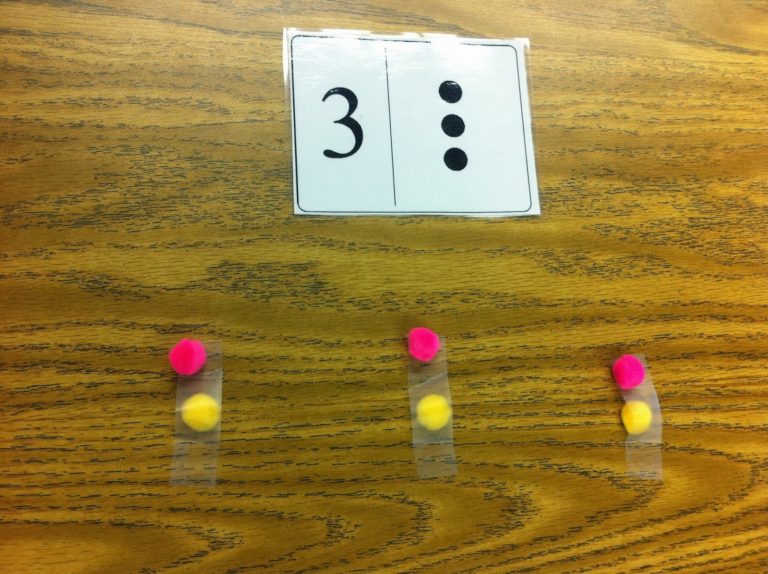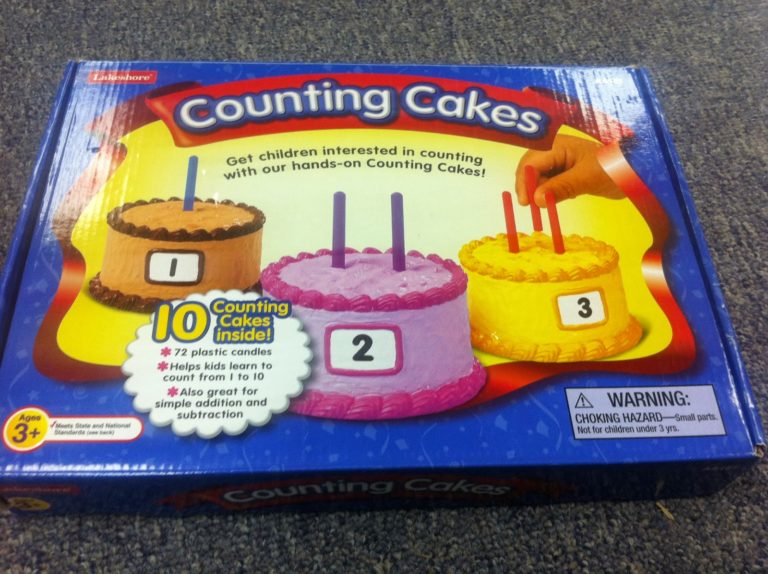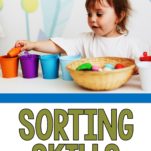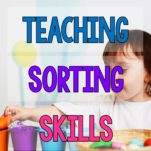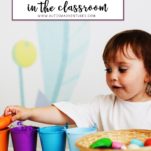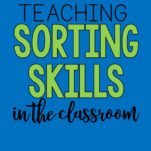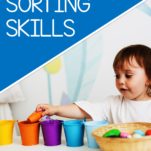Teaching Sorting Skills in the Classroom
Teaching basic skills is so important in any classroom. Teaching basic skills can be fun, hands on and educational all at the same time. Today’s blog post I am going to be talking all about sorting skills in the classroom, and why these skills are a crucial basic skill for students.
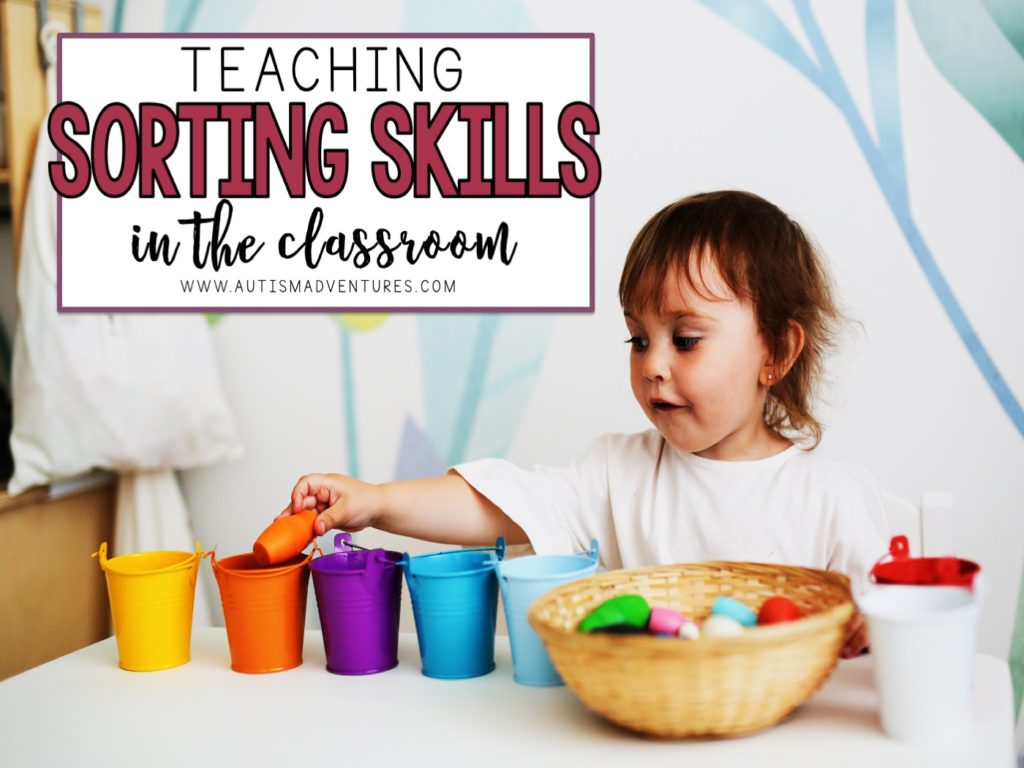
* This post may contain affiliate links. This means that if you click and end up purchasing, you pay no extra cost, but I earn a small fee for referring you.
Children start to learn about sorting before they even begin to walk. Think about a young boy who has a dog at home. He learns quickly to call it a dog. The boy also sees dogs being walked and dogs in the park and he calls them all dogs. He visits a neighbor who has a cat, and he calls it a dog. His mom says, “No, that is a cat.” So, the boy begins to learn that one name does not work for all animals with four legs; he starts to organize new information by seeing what is the different.
This is the very beginning of learning to sort. Classifying items by their different attributes and sorting them into groups have many benefits and real-world applications. For parents and teachers, there are also nearly endless possibilities for activities that children can do to practice sorting.
Benefits of Mastering the Basic Skill of Sorting
There are many benefits that children gain as they learn to sort. Sorting helps to promote early math skills that form a foundation for later math learning. It also develops general cognitive processes that children will carry with them into adulthood.
Sorting is an early math skill. When students sort, they are learning about sets (this is a set of red toys and this is a set of blue toys) and they are learning about attributes, or characteristics, of items. Being able to identify attributes helps support geometry learning later, such as determining if a given triangle is equilateral, scalene, or isosceles. Sorting can also reinforce counting skills, and children can organize items as they sort, so that they learn about rows and columns.
Three main cognitive skills are developed when children learn to sort. The first skill is critical thinking. Students consider each object as they sort and determine which sorting group the object belongs to. Finding items that all have the same characteristic and grouping them together involves evaluation, which is a high-level thinking skill.
The second cognitive skill that is enhanced when children sort items is problem solving. Sorting requires logical thinking and organization and grouping items that are alike is a part of learning to organize.
The third skill that is promoted through sorting is language development. Students learn words that are used to describe items:
- Light, medium, heavy
- Long, short
- More, fewer
- Same as, different from
- Smaller, larger
- Color words
- Shape words
How Sorting Skills Lead to Real-World Learning
Learning to sort items in the classroom generalizes easily to the real world, since sorting is used frequently in outside-of-school settings. At home, we sort dishes and silverware as we put them away and we sort laundry for washing. In work settings, paperwork is sorted and filed according to a variety of categories (by client, by topic, etc.) and data in spreadsheets can be sorted by a variety of attributes.
Learning to sort also enhances higher-level thinking skills. Children who are able to sort well are likely to understand relationships and determine connections between objects, numbers, and people.
Activities to Practice Sorting in the Classroom
When beginning a sorting activity, the first step is for children to identify the characteristics being used to sort. In early sorting activities, the teacher should facilitate this (“Let’s put all the toys with wheels here and the toys without wheels here”; “let’s put the red blocks here, the blue blocks here, and the yellow blocks here”).
Then, the second step is for children to physically sort the objects. The final step, when the sorting is complete, is for children to explain the sorting rule. That sounds like this: “All of these toys have wheels and all of these toys don’t have wheels.” “All of these blocks are red, all of these blocks are blue, and all of these blocks are yellow.” In the beginning, teachers set up the sorting rule as they facilitate the activity. However, as students learn to sort, they should establish their own sorting rule and explain it after they sort the items.
One classroom activity that teachers can do to help students learn to sort is to set up a sorting station. Just about any items can be used for sorting, but here are some ideas to get you started:
Common Manipulatives for Sorting
- Beans (a bag of beans for 11-bean soup provides lots of variety)
- Coins
- Crayons
- Small toys
- Picture cars
- Playing cards (for older children – they can sort by color or number)
- Stickers
- Small toys
- Socks
- Buttons
- Magnetic letters
- Marshmallows (small/large, by color)
- Paint sample squres
- Legos
- Candies
- Rocks
- Seashells
- Photos
Other Sorting Activities
Another classroom activity for sorting involves sorting KIDS! The teacher should collect a small group of students (4-5 is recommended). Select another student, not in that group, to be the sorter. The sorter considers the 4-5 students in the small group and sorts them into two groups. The other children in the class then try to guess what the sorting rule is that the sorter used. The student that correctly guesses the sorting rule then becomes the sorter.
One way to involve parents and families in sorting is the idea of “collections”. Give each student a small zip-lock bag and tell them to bring in a collection of 7-10 items in that bag. During class time, the teacher can ask the children to take out their collections and sort them in one way, and to explain their sorting rule. Then the teacher might ask them to re-sort them in a different way. A variation of this activity is to play a version of “musical chairs”. After the first time that the children sort their items and tell the sorting rule, the teacher should ask the children to shift to the next seat over and sort the objects in front of them and tell the sorting rule. Continue to have them shift to different seats so that they have multiple opportunities to sort items other than their own.
A quick tip: Sometimes children, particularly young ones, need physical boundaries for sorting. If a student is sorting small items, using a paper plate with labels or construction paper as sorting mats might be helpful. A few of my favorite sorting trays are below:
Sorting Binder Tasks
I am a huge believer in binder tasks and file folder activities in the classroom. They may require a lot of prep in the beginning, but offer so many benefits for years to come.
This Binder Work System focuses on sorting tasks! There are 60 interactive pages that can be used to practice learning sorting objects. All of these binder task activities are non-seasonal, meaning they can be used year round!
This bundle includes sorting into:
The Binder work system is great for early childhood programs, special education programs or autism classrooms/programs. The Binder Work system was designed to create a systematic routine system for students to work independently on already mastered skills that they learn at the math, reading, and writing centers/classes. This can be an every day work center/rotation within your classroom that requires no planning. To learn more about organizing and storing binder tasks, read this blog post HERE.
If you are looking for some free binder task visuals, click on the images below or read this old blog post HERE.
This product can be used 3 different ways:
- Print, laminate and assemble in binders for reusable interactive work tasks
- Assemble into file folder activities
- Print and use as cut and paste worksheets for extra practice/fillers
Sorting Games
Below are some great games to practice sorting in the classroom! These are all available on Amazon and most are also available at common places like teacher supply stores, Target and Walmart!
In Summary
Sorting is a fundamental skill that provides the foundation for learning in many different areas. Not only do children develop many pre-academic skills, sorting activities are just fun!
Like what you read? Don’t forget it, PIN IT!
